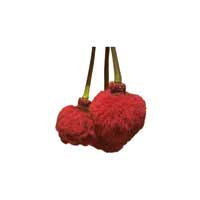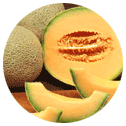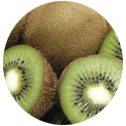 Full List of Fruits
Full List of Fruits  Nere Fruit
Nere FruitNere Fruit
Scientific name - Parkia biglobosa
Parkia biglobosa is a multipurpose perennial deciduous tree having its roots of the Fabaceae family. Commonly recognized as the locust bean tree, they are grown primarily for its pods that are full of sweetish pulp and seeds. Widespread in Africa, the crushing and fermenting of these seeds make up a main economic activity. Also known as African locust bean or nere, various parts of the tree are used for medicinal purposes.
Parkia biglobosa is a dicotyledonous angiosperm, categorized under spermatophytes this deciduous perennial tree can grow up to 20 m and in some cases they can be 7, however it can grow up to 30 metres. Distinguished by a chunky gray-brown bark, the tree is a fire-resistant heliophyte with a dense diffusing crown. With its gland having the shape of a flat ring on the petiole, the leaves of the tree bipinnate up to 40 cm long. It bears flowers that are red or orange, clustered in heads up to 7 cm in diameter. The pods of the tree is called as locust beans, it changes from pink color to dark brown when fully mature.
![]() Nutritional Value of Nere Fruit
Nutritional Value of Nere Fruit
| Protein | 6.56% |
| Fat | 1.80% |
| Crude Fibre | 11.75% |
| Ash | 4.18% |
| Carbohydrate | 67.30% |
| Total Carotenoids | 49,175ug/ 100g |
| Ascorbic acid | 191.20mg/100g |
| Crude Saponins | 17.80mg/ 100g |
| Tannins | 81.00mg/100g |
| Total Phenols | 204.60mg/ 100g |
| Hydrocyanic Acid | 17.30mg/ 100g |
The tree is known for its multi-use purposes and following are some of the health benefits listed. The best part about the tree is that they are very tolerant to mediocre soil conditions. The bark of the tree is used as a:
 Mouthwash
Mouthwash
 Vapor inhalant for toothache and
Vapor inhalant for toothache and
 For ear complaints
For ear complaints
They are also macerated in baths for treating
 Leprosy also used for
Leprosy also used for
 Bronchitis
Bronchitis
 Pneumonia
Pneumonia
 Skin infections
Skin infections
 Sores
Sores
 Ulcers
Ulcers
 Bilharzia
Bilharzia
 Washes for fever
Washes for fever
 Malaria
Malaria
 Diarrhea
Diarrhea
 Violent colic and vomiting
Violent colic and vomiting
 Sterility and, venereal diseases
Sterility and, venereal diseases
 Guinea worm
Guinea worm
 Oedema and rickets,
Oedema and rickets,
 Also used as poison antidote.
Also used as poison antidote.
Nere fruit can be used in a variety of ways. It can be eaten raw, juiced, or cooked. It can also be used to make jams and jellies, as well as pickles. Additionally, it can be used to flavor curries, soups, and other dishes. It can also be used to make syrups, sauces, and smoothies.
Nere fruit is also used in traditional medicine. In India, it is used to treat stomach problems, skin diseases, and fever. It is also believed to have anti-inflammatory properties, which can help to reduce inflammation in the body. Additionally, it has been used to help treat depression and anxiety.
Nere fruit is an excellent source of dietary fiber and can help to promote a healthy gut. It is also believed to help with weight loss by increasing satiety and reducing hunger. Additionally, it can help to improve digestion and absorption of nutrients from food.
Nere fruit can also be used as a natural laxative. Its high fiber content can help to soften stools and promote regularity. It is also believed to help with constipation by increasing the flow of bile, which in turn can help to break down fats and proteins in the digestive system.
Finally, Nere fruit can be used to make a delicious drink. Simply blend the fruit with a little water, honey, and ice and enjoy a refreshing beverage. Alternatively, it can be used to make a refreshing sorbet. Simply blend the fruit with sugar and freeze in an ice cream maker.
In conclusion, Nere fruit is a tropical, citrus-like fruit that is gaining popularity in recent years. It is high in vitamins and minerals, antioxidants, and dietary fiber. Additionally, it has a number of potential health benefits, including improved digestion, weight loss, and better blood sugar control. Furthermore, it can be used in a variety of ways, including raw, juiced, cooked, or made into jams, jellies, and other desserts. Finally, it can be used to make a delicious and refreshing drink or sorbet.


















